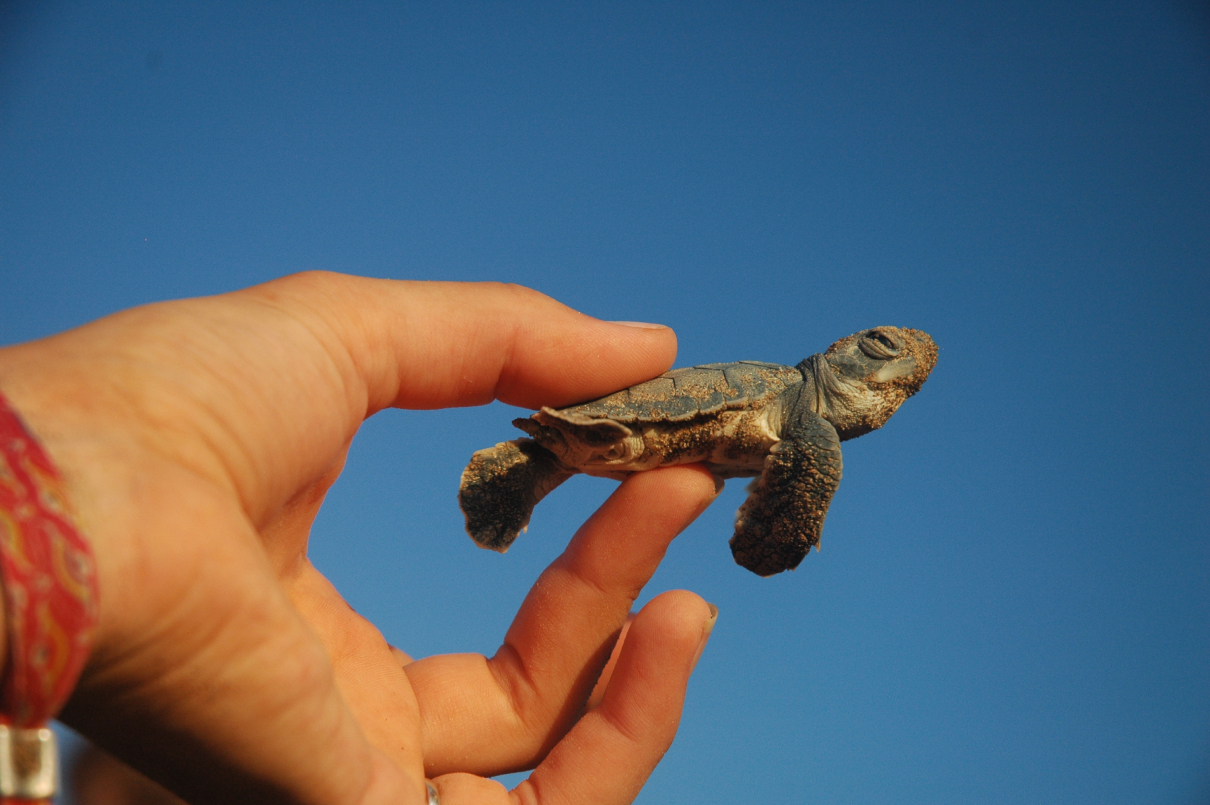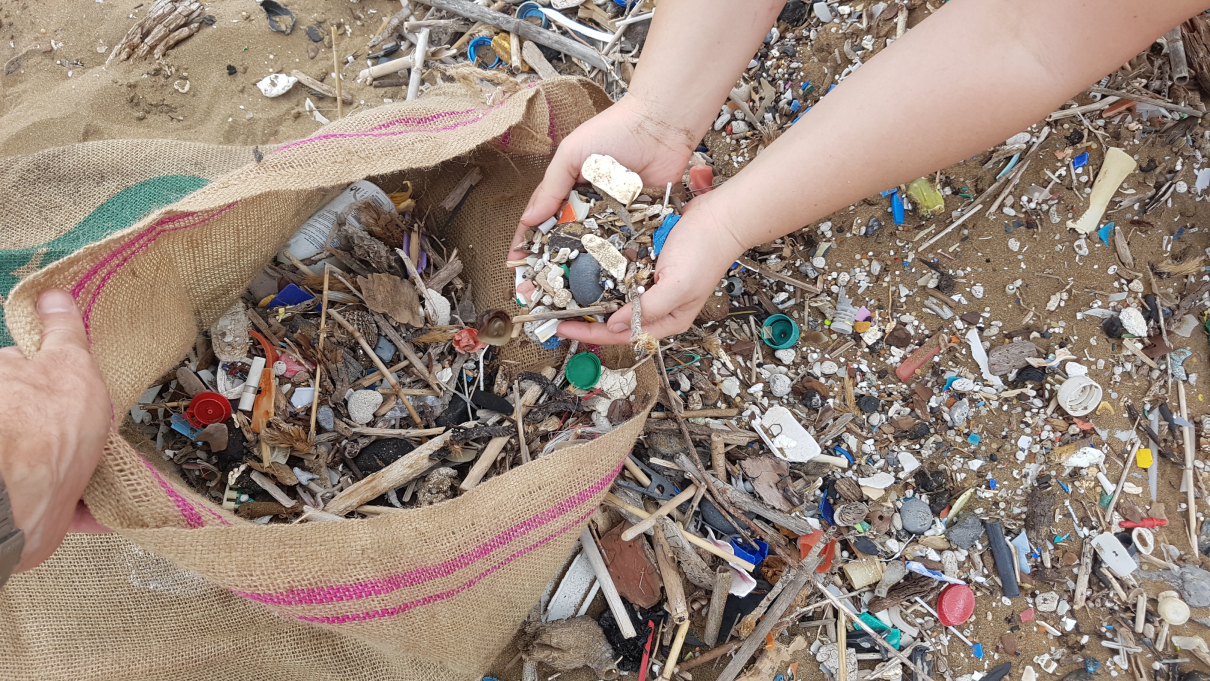- Green and loggerhead turtle nest counts have increased by 162% and 46% respectively in less than two decades on North Cyprus in the Mediterranean.
- The increase has been achieved through preventing nests being raided by dogs and foxes, and protecting the beaches from tourism development.
- Conservation begun by enthusiasts in 1983 is now organized by a local NGO, the Society for the Protection of Turtles (SPOT), in collaboration with scientists from the University of Exeter in the U.K. and the local Department of Environmental Protection.
- Many issues still impact the recovery of turtle populations: loggerheads are killed in fishing nets, while both species are affected by plastic pollution in a variety of ways.
In May, female turtles will start emerging from the Mediterranean onto the shores of Turkey, Greece and Libya, as well as onto islands such as Cyprus, Crete and Sicily. They will crawl laboriously up the beaches to dig their nests and lay their eggs, continuing an annual miracle of evolution that has been taking place for more than 200 million years.
On North Cyprus last year, just over 2,400 nests were recorded, an all-time high, and 10 times more than the number counted during the first proper survey carried out in 1988. Bucking many global wildlife trends, green (Chelonia mydas) and loggerhead turtle (Caretta caretta) numbers in the Mediterranean (the only two species that breed there) are on the rise.
“Numbers have increased a lot because of the protection [we give them],” says Kutlay Keço, chairman of the North Cyprus Society for the Protection of Turtles (SPOT). “It’s the best project in the whole of the Mediterranean, if not the whole world.”
Keço, who fought in the civil war that resulted in the partition of the island in 1974 and the creation of what is now the Turkish Republic of Northern Cyprus, helped to found SPOT in 1983. He and other founders monitored beaches for nesting females but they knew they needed professional conservation expertise if they were to protect their turtles properly.

Then, as now, North Cyprus was only officially recognized as an independent state by the Turkish government; the U.N. considers it to be part of the Republic of Cyprus. This made it harder to persuade international scientists to visit. As the name suggests, it forms the northern part of the island, and it’s tiny, covering just 3,355 square kilometers (1,295 square miles), roughly the size of Rhode Island, the smallest state in the U.S.
In 1992, Annette Broderick — now a professor of marine conservation at the University of Exeter and the co-coordinator of its Marine Turtle Research Group, then studying at Glasgow — came as part of an expedition numbering a dozen or so students.
“I remember explaining to other people on the plane why we were going out there, and they — and these were Turkish Cypriot people — were saying, ‘Turtles, I’m not sure we’ve got turtles,’” she says. “I was thinking, ‘Oh gosh, I really hope you do.’ But that was the level of awareness then.”
Luckily, Cyprus did have turtles, but they weren’t doing well. On that first visit, Broderick saw nest after nest that had been scavenged by dogs and foxes, so protecting them with cages has been one of the most essential conservation actions. Today, an army of volunteers patrols all the main nesting beaches on a daily or (in the case of one, Alagadi) nightly basis during the six-month nesting season to make sure they find and secure as many nests as possible.
It has also helped that, especially for green turtles, exploitation for their meat has ceased to be an issue in recent decades. This has helped numbers rebound all over the world.
Finally, North Cyprus, because of its unique political status, was lagging behind other Mediterranean countries in developing its tourism industry in the early 1990s. Conservationists said the key beaches needed to be left as they were, and this protection agenda has been broadly embraced by the North Cyprus government.
From a regional perspective, North Cyprus is especially important for green turtles. Ronnas and Alagadi beaches are the second and fifth respectively most important nesting sites in the Mediterranean. A new paper due to be published soon in the journal Animal Conservation, authored by Broderick and colleagues from Exeter as well as local SPOT scientists, will show that green turtle nest counts on North Cyprus have increased by 162% since 1993, and loggerheads by 46%.
But for Broderick, there is something else that marks out the conservation work they are doing.
“It is a shining example of how to do research,” she says. “We’ve got females that we tagged in 1992 that are still breeding, so we are unravelling some of the life history traits of sea turtles we didn’t know before. If you are trying to predict what will happen to a population, it’s so important to understand basic things such as how long they live for.”

Much of this is made possible by the mainly international volunteers (though this is changing) who come to North Cyprus every nesting season to work.
And work they do — anyone who thinks they’ve come for a relaxing sojourn in the sun will be in for a rude shock. On Alagadi, in order to ensure you identify every female coming up to lay eggs, says SPOT board member Robin Snape, you need a team of 10-15 people to be working continually through the night. If there’s no moon (they don’t use torches so as not to disturb the turtles), you’re effectively looking for them in the pitch dark.
“You’re just looking for changes in the texture on the sand where the tracks are,” says Snape, who has lived in North Cyprus since he came as a volunteer in the early 2000s, and is now married to a local conservationist, Damla Beton.
These difficulties are compounded by the fact that a female will only lay eggs for roughly every three nesting attempts. “You have to learn to follow the track round,” Snape says. “The turtle’s dug here, but then it’s moved to here, but these digging activities can’t be the nest, it must be the last one before it left the beach. All this requires a lot of training.”
Volunteers must also learn to differentiate between a green and loggerhead’s tracks; the former move their rear flippers in unison, leaving a symmetrical track, the latter do it one after the other, leaving an asymmetrical one.
While the beaches are safe from development, there are still some very serious issues impacting the recovery of both species. Loggerheads get accidentally caught and drown in fishing nets, but the scale of this problem is not fully understood. Snape and others are trying to work with fishers to reduce the problem.
North Cyprus also has a terrible problem with waste plastic and other trash, most of which is carried to its shores from anywhere between Turkey and Egypt.
The magnitude of the pollution has to be seen to be believed, says Ceren Barlas, who has worked for SPOT in various capacities since first volunteering for the project as a 17-year-old high school student in 2003.
“We get anything from little plastic spoons to huge fridges wash up on our shores,” Barlas says. “Ronnas Beach is very hard to get to, and therefore not cleaned much, and lots of the plastic just remains there, layers upon layers of it.”
Nesting females will often give up digging if they encounter a big piece of plastic in the sand, while newly hatched baby turtles that are coming up through the sand might find their passage physically blocked. “We once found a piece of plastic packaging with a hole in it. A hatchling was trying to get through the hole, and it got stuck and died,” Barlas says.

Last summer, Barlas managed the beach-cleaning program for SPOT. They carried out 12 beach cleanups, each one taking up to three hours and involving an average of 25-30 volunteers, and they removed more than three metric tons of trash. They try to get schoolchildren to join as much as possible as a way of engaging the younger generation.
“We always have a little session before and after the clean, just five minutes talking to them about how the plastic affects the turtles, and then do a turtle release too to show them in action,” Barlas says.
Barlas is two years into a Ph.D. studying the impact of microplastics — fragments less than 5 millimeters, or a fifth of an inch, in length — on the temperature of the sand. It’s important for two reasons: first, turtle gender is determined by temperature, and the warmer the sand in which the eggs incubate, the more females will hatch. Second, climate change is expected to raise temperatures over time, so the question of whether plastic pollution is doing the same has added importance. “We don’t know if they are having an impact, no studies have been done on this,” Barlas says.
Pandemic lockdowns across the world created particular problems for turtle conservation in North Cyprus. Historically, SPOT has relied on biology students from abroad to do the essential nesting-season monitoring and nest protection. Many of them come for weeks on end, and they pay a contribution that covers their costs. But last summer, this wasn’t possible, and SPOT turned to locals to fill the void.
From a local population of 300,000 people, they recruited 300 volunteers. This was great for raising awareness about turtle conservation locally, but there were downsides. First, most were unable to commit to working more than a week or two, making it hard to maintain a pool of trained people, while SPOT decided not to charge them as they do international students. This meant they had to raise money for basic operating costs in another way: a crowd-funding campaign raised the equivalent of nearly $33,000.
Annette Broderick says she feels they may not have done enough up until now to involve local people, and the necessity of doing it last year produced fantastic results. The question now is, “how do we continue to foster that involvement but keep the funding going?”
There is much local pride in the island’s turtles. Tarik Bozalan runs the Caretta restaurant on Akdeniz Beach and has long tried to educate visitors to not disturb nesting females. He also organizes his own beach cleanups with university students and social clubs. “When I opened the restaurant 15 years ago, there were only 20 to 25 nests a year,” he says. “Now, there’s up to 350.” Last year, SPOT awarded Bozalan its “Caretta” flag in recognition of his efforts.
Most days on Alagadi Beach during the height of the nesting season, vacationers can witness the volunteers excavating nests where the turtles are hatching. This is done to increase survival rates, because dogs and foxes will snap up any stragglers they find, and it also raises funds through voluntary donations.
The hatchlings are held back, then released into the sea once night falls to begin their perilous odyssey. Despite this intervention, an often-quoted figure of the marine turtle’s biology is that only an estimated one in 1,000 will reach adulthood to breed. Those on North Cyprus, at least, have better odds than most.
Banner image: Nests are excavated in front of tourists to raise awareness about turtle conservation on North Cyprus. Credit: James Fair.
